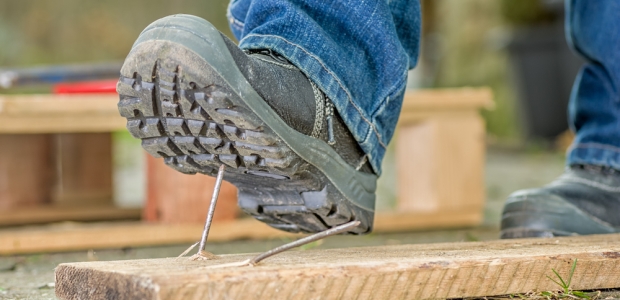
A Review of the Pros and Cons of Today's Safety Footwear Delivery Systems
The best method of obtaining safety footwear for your employees could be a combination of several elements.
- By Don Stallings
- Apr 01, 2015
Finding the right safety footwear for your employees is extremely important to your everyday safety program. But, just as important to you and your ability to manage your safety footwear program is finding the right method of distribution and delivery for safety footwear to your employees. Today, more than ever, you as the safety professional have an assortment of delivery options available that can meet the corporate needs of just about any company. The real question today is which one meets your needs.
There are five primary methods of distribution and delivery for your consideration:
On-site (Shoemobile) Service
This method involves a mobile unit (a shoe store on wheels) that comes directly to your plant at predetermined dates and times. The mobile unit will be inventoried with multiple brands and styles of safety footwear that you have approved and specified for your various job applications.
Employees visit the mobile unit at a pre-determined time. The mobile sales representative measures, sizes, and fits each employee with the type of footwear that meets the specifications and requirements for their working environment, and which you have approved.
On average, 90 percent of your employees will receive their footwear during the initial mobile visit. All required paperwork and documentation is completed with the required signatures during the mobile’s visit. This documentation is then used to generate an invoice for that day’s mobile service.
Benefit: You are assured that employees are getting the type of safety footwear that meets your specifications and requirements for your foot protection program. The employee is properly measured, sized, and fitted and is provided specific instructions as required by OSHA under the OSHA 1910 PPE standards of how to "don, doff, and maintain" footwear.
To consider: On-site mobile service is the best and quickest method of distribution and delivery. This is especially true when needing larger volumes of employees serviced in a minimal time period, while reducing your time of involvement.
Showrooms or Retail Locations
Safety footwear retail outlets may be located near your plants. Employees can go to the stores and select the styles specified by you. The retail staff should be informed and knowledgeable of your safety footwear requirements so that the correct style is issued to them when your employees come to the store.
Either the employees can purchase the footwear or payment arrangements can be made through your payroll deduction program or any other payment programs that you may have.
Benefit: The employees can go to the store on their time, be expertly sized and fitted, and be instructed on the PPE standards of how to don, doff and maintain PPE.
To consider: When reviewing the safety footwear provider, make sure to understand whether store personnel are fully trained and understand the directives of OSHA’s PPE footwear requirements.
Website Ordering
Ordering safety footwear online is an alternative delivery method. Employees log on to a dedicated website and select their footwear. The footwear is then shipped. Customized website pages can be specifically developed to your requirements.
Benefit: Ordering of the footwear is all done in one place.
To consider:
1. Be sure the vendor's website has a PPE section detailing PPE requirements and standards of how to don, doff, and maintain PPE and a way to explain it.
2. Make sure that employees have a way to measure their feet, because the return rate is considerably higher with website ordering due to incorrectly fitting footwear.
3. Make sure there is a flexible payment method to either pay online or through other payment programs provided by your company.
On-Site Consignment Stores
These are an efficient solution when your requirements are nearly a daily occurrence. This allows you to control, distribute, and maintain an on-site inventory of safety footwear in an area similar to a "tool crib."
Your vendor will inventory and maintain the styles and sizes your personnel require. The inventory will be replenished based on actual sales in order to maintain a sufficient level for your daily usage.
On-Site Commissary Stores
This method of distribution works well for considerably larger operations involving 1,000 or more employees. The safety footwear vendor would actually stock, man, and operate a shoe store on site on predetermined days and times that best service your employees' needs. This service can be provided on either a full-time or part-time basis. Your employees would receive the benefits of having full retail-type service at their disposal without having to leave the job site.
The best method of obtaining safety footwear for your employees could be a combination of the above elements. Understanding what a specific supplier can and cannot provide, and what their service limitations are, is critical to the success and overall performance of your safety footwear program.
This article originally appeared in the April 2015 issue of Occupational Health & Safety.